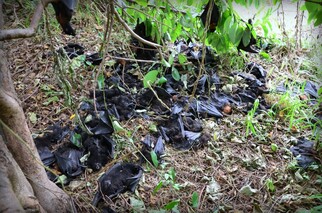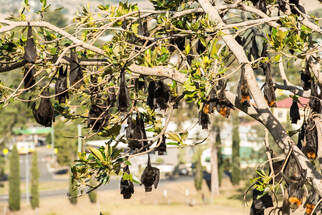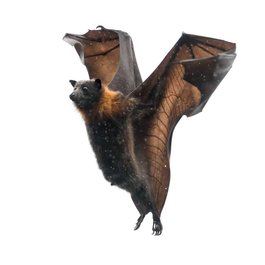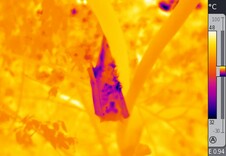PhD opportunities
Below we list some current and past PhD opportunities in our lab. However, we are always happy to consider any ideas for PhD projects as long as they broadly align with our research interests.
Feel free to contact us if you'd like to find out more about current opportunities!
Note that, unless the project is explicitly receiving industry-co-funded scholarship support, prospective PhD students will need to apply for a research scholarship (AU$30,000/annum, tax free) provided directly by the university.
Feel free to contact us if you'd like to find out more about current opportunities!
Note that, unless the project is explicitly receiving industry-co-funded scholarship support, prospective PhD students will need to apply for a research scholarship (AU$30,000/annum, tax free) provided directly by the university.
SPATIAL ECOLOGY, SURVIVORSHIP AND BEHAVIOUR OF IMPORTANT AUSTRALIAN GAME WATERFOWL
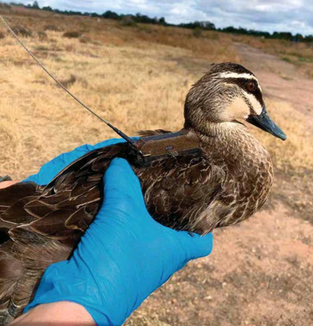
This PhD opportunity comes with full scholarship and project co-funding support.
Duck hunting in various forms (i.e., recreational, damage mitigation) is permitted in a number of states and territories in Australia. To ensure hunting remains sustainable, it is important to understand the population dynamics of the main game duck species, their response to environmental drivers and the impact of harvest offtake. In developing a model of duck population dynamics to support adaptive harvest management, data are required for estimating the survival and movement/dispersal of game ducks in response to habitat availability (see Ramsey et al. 2017).
Large-scale GPRS/GSM telemetry of individual ducks will be used to estimate age and sex-specific survival rates as well as movement between habitat types across Australia’s different bioclimatic zones. Species of interest are the Pacific black duck Anas superciliosa, the grey teal Anas gracilis and the Australian wood duck Chenonetta jubata. The large movement and accelerometry datasets generated by this study should also provide opportunities to investigate the behaviours and energetics of these species in detail.
Learnings from this project will complement existing datasets on game duck abundance as well as habitat distribution and extent. It will contribute to an improved understanding of these species and their relationship with the environment, and lead to improved conservation and management outcomes.
The work will supervised by members and affiliates of the Lab of Animal Ecology at the Hawkesbury Institute for the Environment in close collaboration with the members from the independent Game Management Authority and from the Arthur Rylah Institute within the Department of Energy, Environment and Climate Action in Victoria.
Duck hunting in various forms (i.e., recreational, damage mitigation) is permitted in a number of states and territories in Australia. To ensure hunting remains sustainable, it is important to understand the population dynamics of the main game duck species, their response to environmental drivers and the impact of harvest offtake. In developing a model of duck population dynamics to support adaptive harvest management, data are required for estimating the survival and movement/dispersal of game ducks in response to habitat availability (see Ramsey et al. 2017).
Large-scale GPRS/GSM telemetry of individual ducks will be used to estimate age and sex-specific survival rates as well as movement between habitat types across Australia’s different bioclimatic zones. Species of interest are the Pacific black duck Anas superciliosa, the grey teal Anas gracilis and the Australian wood duck Chenonetta jubata. The large movement and accelerometry datasets generated by this study should also provide opportunities to investigate the behaviours and energetics of these species in detail.
Learnings from this project will complement existing datasets on game duck abundance as well as habitat distribution and extent. It will contribute to an improved understanding of these species and their relationship with the environment, and lead to improved conservation and management outcomes.
The work will supervised by members and affiliates of the Lab of Animal Ecology at the Hawkesbury Institute for the Environment in close collaboration with the members from the independent Game Management Authority and from the Arthur Rylah Institute within the Department of Energy, Environment and Climate Action in Victoria.
Supervisor: Prof Justin Welbergen
Co-supervisors: Dr Jessica Meade & Dr John Martin
Research Locations: Victoria, New South Wales, South Australia
Co-supervisors: Dr Jessica Meade & Dr John Martin
Research Locations: Victoria, New South Wales, South Australia
For details as to how to apply for this fully funded PhD opportunity, please visit this Scholarships page from Western Sydney University.
Deadline: open until 31 March 2023
THE IMPACTS OF EXTREME TEMPERATURE EVENTS ON AUSTRALIAN FLYING-FOXES
|
While changes in the long-term mean state of climate are having numerous effects on a range of environmental, social, and economic sectors, many significant impacts of climate change are expected to emerge through shifts in the intensity and the frequency of extreme weather events, particularly heat waves.
Our research has shown that temperatures exceeding 42 ºC cause mass mortality among flying-foxes at near biblical scales, with profound effects on the behaviour and ecology of the species. These events are set to escalate under climate change, with disturbing implications for flying-foxes and other organisms in Australia and beyond. |
The overarching aim of our current research program is to develop a comprehensive understanding of the vulnerability of flying-foxes to extreme heat events, and provide a much-needed evidence base for management and conservation.
The PhD project would contribute to this by addressing one or more of the following questions:
- What are the ecophysiological drivers of vulnerability of Australian flying-fox species to extreme heat events?
- How can we accurately predict extreme heat-related flying-fox die-offs occurring in the immediate future?
- What are the implications of extreme heat events for the long-term persistence of flying-foxes and other wildlife?
- What management responses can help lessen the impacts of these events on flying-foxes and other wildlife?
Supervisor: Prof Justin Welbergen
Co-supervisors: Dr Jessica Meade, Dr Christopher Turbill
Research Locations: Australia-wide
Co-supervisors: Dr Jessica Meade, Dr Christopher Turbill
Research Locations: Australia-wide
|
To express your interest in this PhD opportunity please email Prof Justin Welbergen with a copy of your CV and a short paragraph outlining your skills, experience, and research interests.
Position has been filled |
FLYING-FOX URBANISATION
|
In recent years, flying-foxes (Pteropus spp.) have become increasingly common in urban areas. Flying-fox urbanization has been hypothesized to be a result of loss of native habitat and urban expansion, and increases in the spatiotemporal availability of urban food resources. Despite the critical ecological importance of flying-foxes, their presence in the urban landscape has become a prominent wildlife management issue.
This project is aimed at understanding what supports flying-foxes in human-modified landscapes, to help managers make informed decisions regarding the conservation management of these ecologically important species. |
Supervisor: Prof Justin Welbergen
Co-supervisors: Dr Jessica Meade & Dr John Martin
Research Locations: Australia-wide
Co-supervisors: Dr Jessica Meade & Dr John Martin
Research Locations: Australia-wide
To express your interest in this PhD opportunity please email Prof Justin Welbergen with a copy of your CV and a short paragraph outlining your skills, experience, and research interests.
Position has been filled
Position has been filled
|
Flying-foxes are among the most mobile mammals on earth by most measures, and their extreme mobility makes them key long-distance pollen and seed dispersers in Australia’s fragmented forest ecosystems. One of the least well understood aspects of flying-fox ecology is their ability to orient in space and time. This project aims to investigate the sensory modalities that Australian flying-foxes use to navigate.
Supervisor: Prof Justin Welbergen
Co-supervisors: Dr Jessica Meade, Dr Christopher Turbill, & Dr John Martin Research Locations: Adelaide South Australia, Greater Sydney Region New South Wales, Australia. |
|
To express your interest in this PhD opportunity please email Prof Justin Welbergen with a copy of your CV and a short paragraph outlining your skills, experience, and research interests.
Position has been filled |
|
This project will use these bio-logging methods to understand and predict how energetics affect the behavior and movements of flying-foxes over space and time.
Supervisor: Dr Christopher Turbill Co-supervisors: Prof Justin Welbergen, Dr Jessica Meade Research Locations: Australia. |
|
To express your interest in this PhD opportunity please email Dr Christopher Turbill or Prof Justin Welbergen with a copy of your CV and a short paragraph outlining your skills, experience, and research interests.
Position has been filled |
|
The males of many species of bird attract females by performing dance-like visual displays accompanied by elaborate songs, but such multimodal performances are poorly understood. The Menuridae – the lyrebirds – are famous for their mimetic songs but they also perform elaborate multimodal displays. Our previous work has focused on the superb lyrebird but at present it is unclear to what extent their displays are unique to this species and what features are typical of the Menuridae more generally. This project will provide the first systematic study of the multimodal displays of Albert’s lyrebirds, informing our understanding of the song and dance displays of the Menuridae more generally.
|
|
Supervisor: Prof Justin Welbergen
Co-supervisors: Dr Anastasia Dalziell (Cornell University) & Prof Rob Magrath (Australian National University)
Research Locations: Sub-tropical New South Wales and Queensland, Australia
Co-supervisors: Dr Anastasia Dalziell (Cornell University) & Prof Rob Magrath (Australian National University)
Research Locations: Sub-tropical New South Wales and Queensland, Australia
|
To express your interest in this PhD opportunity please email Prof Justin Welbergen with a copy of your CV and a short paragraph outlining your skills, experience, and research interests.
Position has been filled |
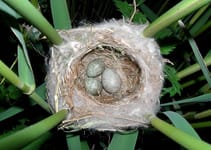
CUCKOOS AND HOSTS – ADAPTATIONS AND COUNTERADAPTATIONS
Coevolutionary arms-races, where adaptations in one party select for counteradaptations in another and vice-versa, are fundamental to interactions between organisms and their predators, pathogens and parasites. By laying their eggs in the nests of other bird species, brood parasites, such as cuckoos, burden their hosts with rearing chicks that are not their own. This favours the evolution of host defences that in turn select for improved parasite offenses. A range of projects is available, involving both field-based experiments and theoretical exercises, to explore coevolutionary processes in brood parasite-host systems.
Supervisor: Prof Justin Welbergen
Co-supervisors: TBA
Research Locations: TBA
http://news.bbc.co.uk/earth/hi/earth_news/newsid_9458000/9458906.stm
Coevolutionary arms-races, where adaptations in one party select for counteradaptations in another and vice-versa, are fundamental to interactions between organisms and their predators, pathogens and parasites. By laying their eggs in the nests of other bird species, brood parasites, such as cuckoos, burden their hosts with rearing chicks that are not their own. This favours the evolution of host defences that in turn select for improved parasite offenses. A range of projects is available, involving both field-based experiments and theoretical exercises, to explore coevolutionary processes in brood parasite-host systems.
Supervisor: Prof Justin Welbergen
Co-supervisors: TBA
Research Locations: TBA
http://news.bbc.co.uk/earth/hi/earth_news/newsid_9458000/9458906.stm

